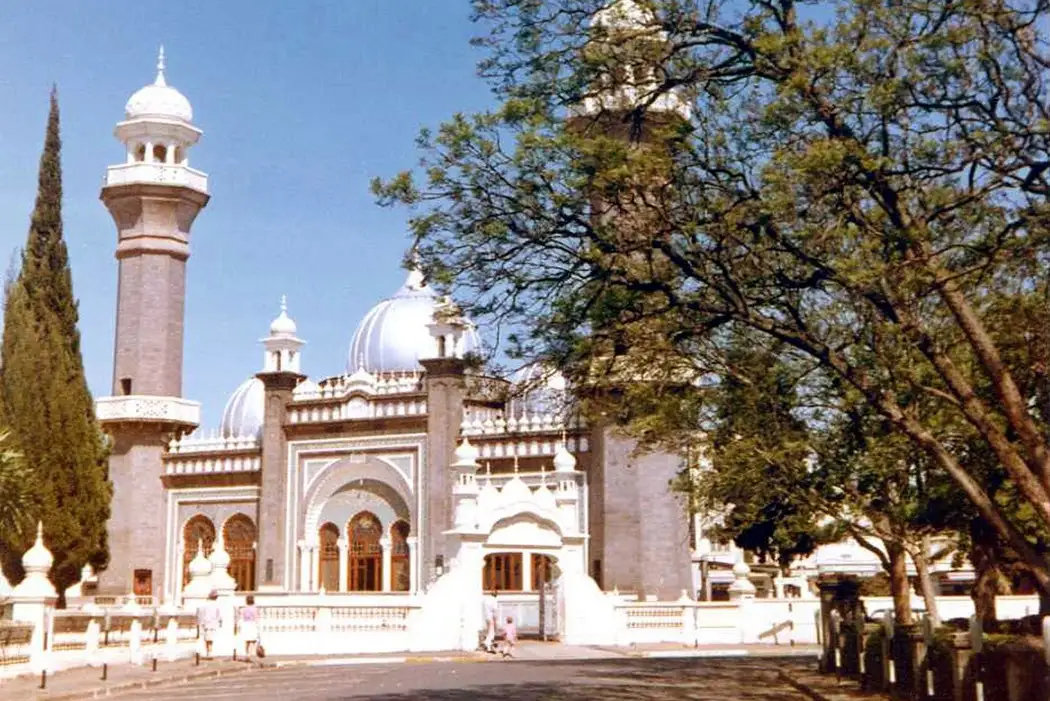Built for Punjabi migrants brought to Africa by the British and modeled on Mughal architecture, the Jamia Masjid in Nairobi serves Kenya’s Muslim minority.
The Jamia Masjid in Nairobi is an impressive sight. Located in the central business district of the bustling city, the mosque boasts striking domes and minarets that might call to mind the Taj Mahal. As art historian Steven Nelson writes, the story of how the building was designed that way offers a window into the complicated cultural exchanges within the British Empire.
While travelers and traders had long linked the Indian subcontinent and East Africa, Nelson writes, a new influx of South Asians arrived in Kenya when the British colonial government began construction of the Uganda Railway at the end of the nineteenth century. Between 1895 and 1901, almost 32,000 Indians—almost all men, largely Muslims from the Punjab region—traveled to Africa to work on the project. It was brutal work, and nearly 2,500 of them died during that time. Most who survived returned to India, but around 6,700 stayed.
The railroad project also brought the establishment of the brand-new city of Nairobi, which became the capital of British East Africa and a hub for the Punjabi community. By 1909, there were more than 3,000 Indians in Nairobi, far more than the number of Europeans in the city.
From the beginning, Indian Muslims in East Africa built mosques for themselves. The first were temporary structures assembled with corrugated iron sheets that the British used in the railroad project.
read more: https://daily.jstor.org/a-mughal-mosque-in-kenya/


